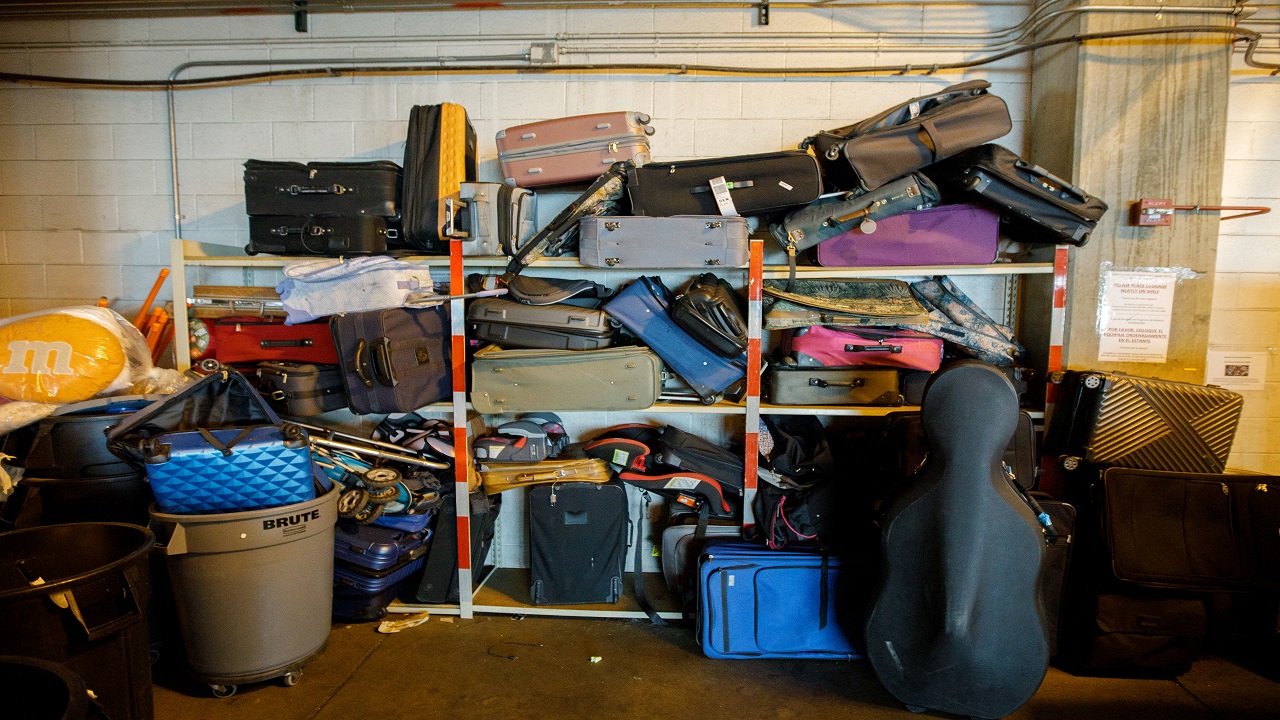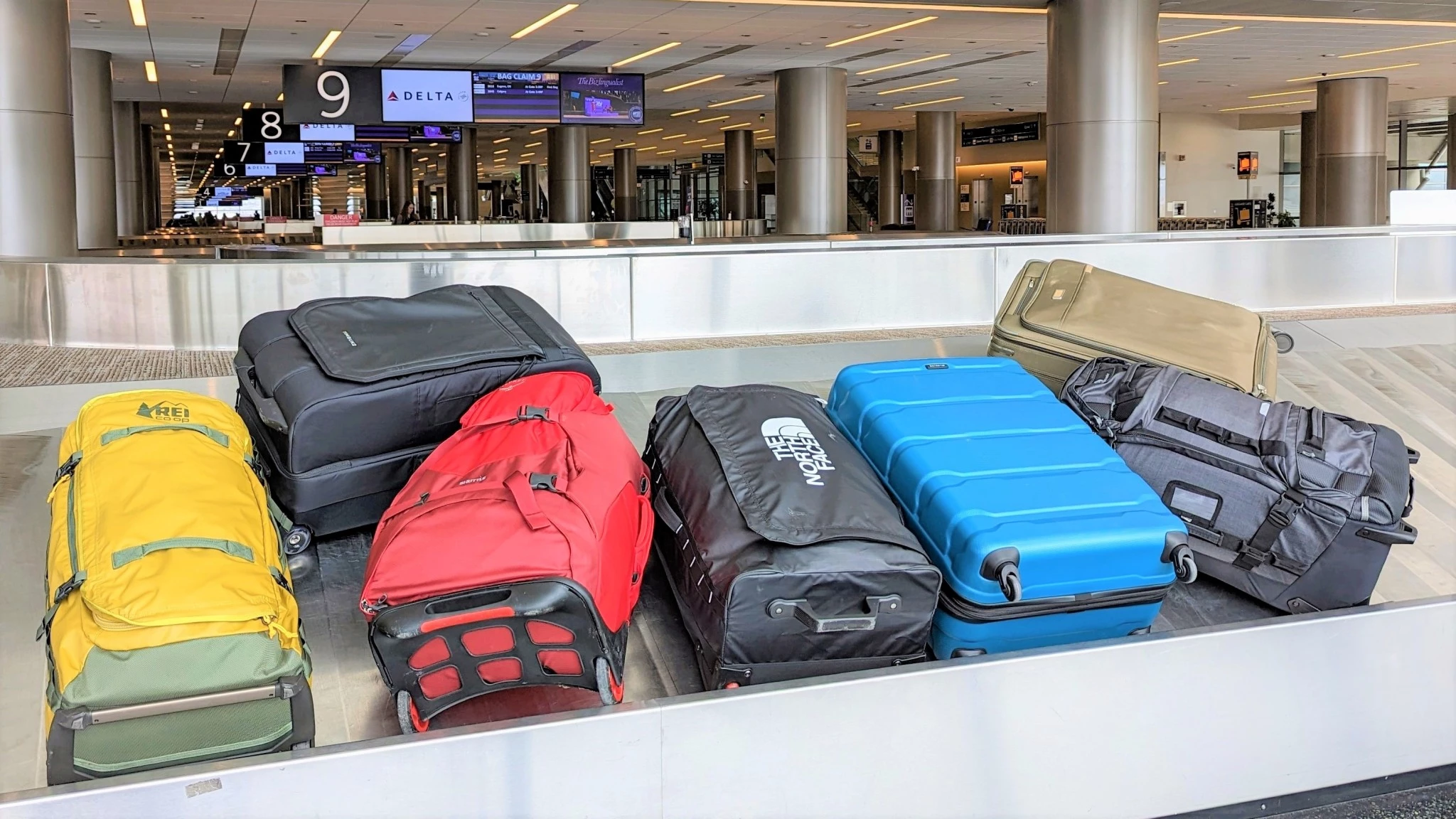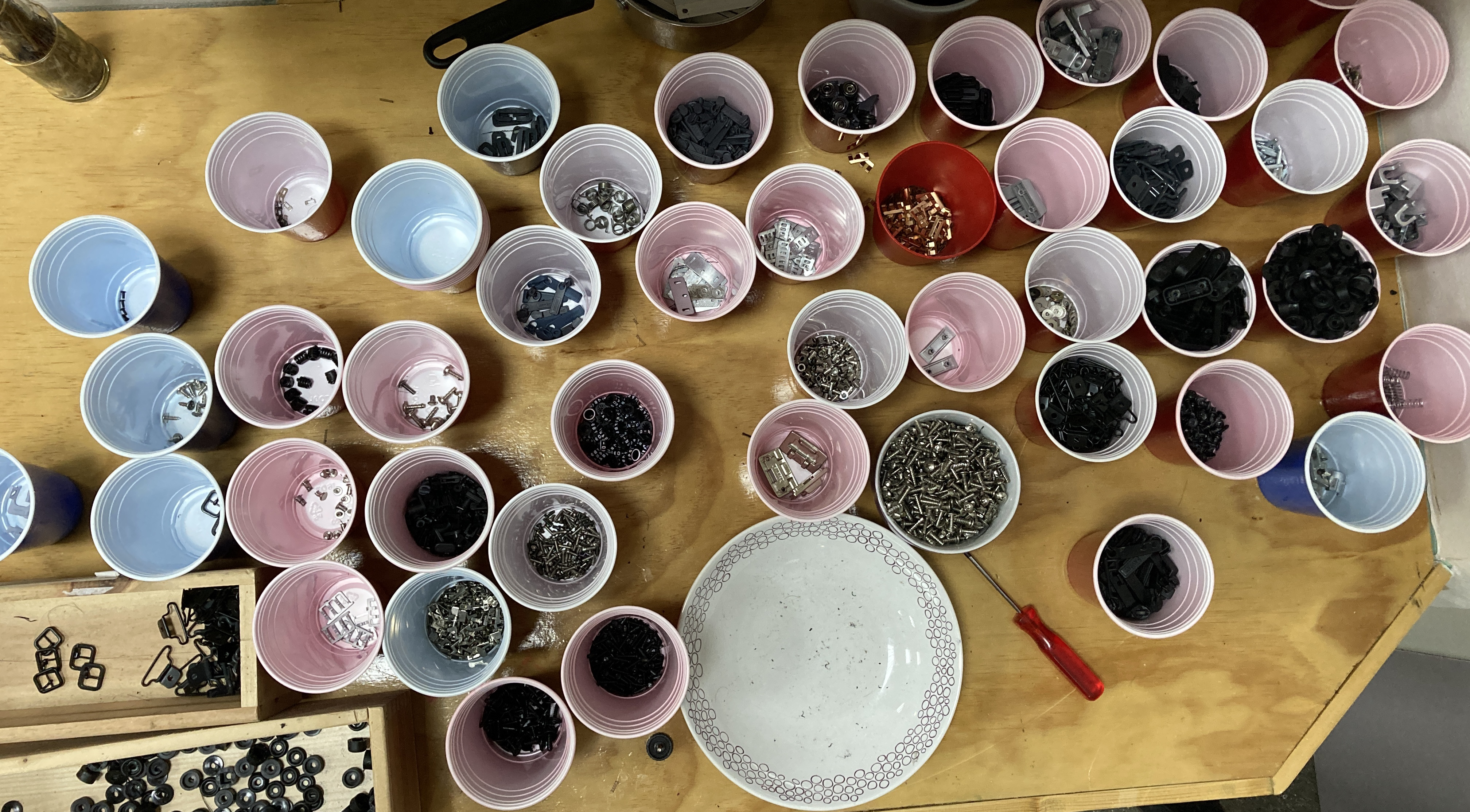Circular Economy in Practice: A Tailor-Made Recycling System for Suitcases
Welcome to our new series, “Circular Economy in Practice,” where we focus on the transition from a linear model to a circular economy, concentrating on innovative solutions to complex recycling challenges. In this post, we’ll unveil an ongoing project – a tailor-made recycling system for discarded suitcases is an example of how we’re moving toward a future where we eliminate waste and pollution.
In light of this, have you ever thought about what happens to your old suitcase after it’s served its purpose? In a world where millions of tons of waste end up in our oceans every year, the need to recycle and reusing products and materials is now more urgent than ever. Join us as we explore the fascinating difficulties of this process, the hurdles we’ve overcome, and how we’re not only saving the planet but creating meaningful jobs along the way.

Abandoned luggage. Source: Denver International Airport.
Moving Towards Closed-Loop Recycling: More Than Just a Dream
Our ultimate goal, at Better Future Factory, is to move towards a closed-loop recycling process where materials extracted from old suitcases can be used to create new products. By keeping resources in the loop for as long as possible, we reduce waste, the need for new raw materials, and the strain on natural resources. The circular economy is a model we’re passionate about, and with every step, we’re working towards making it a reality.
The Complexity of Suitcase Recycling: A Challenge Worth Taking
Suitcases, products that possess inherent qualities and characteristics making them durable enough to withstand rigorous travel conditions while also creating unique challenges in the recycling process. In our current economy, many products, from strollers to desk chairs, face these similar difficulties, but why does recycling suitcases seem so complex?
1. Material Composition
Suitcases are typically made of several high-quality materials, including plastic, metal, leather, and fabric. The durability of these materials contributes to the longevity of the suitcase and therefore makes it also worthwhile to make an effort to recycle the materials, while at the same time it also complicates recycling. Each material type needs to be separated and processed differently, which is a time-consuming and labour-intensive process.
2. Size and Shape
The different sizes and shapes of suitcases further compound the challenge of recycling. Due to their bulky nature they often take up a lot of space making it difficult and costly to transport and store, as well as to collect and recycle them effectively, and therefore require innovative strategies.
3. Zippers, Handles, and Wheels
In addition to the main body, suitcases are also equipped with zippers, handles, and wheels, which are not easily recyclable. These components are often made of different materials and are not easy to separate from the rest of the suitcase. In most cases, they need to be removed before the suitcase can be recycled, adding an extra layer of complexity to the process.
4. Limited End-of-Life Options
When suitcases reach the end of their lifespan, either due to functional failure or because they’ve become outdated, there are limited options for disposing of them. Some parts of the suitcase can be recycled, but many end up in landfills or incineration facilities. Design for disassembly and introducing refurbished suitcases could be of great value to improve end-of-life options, aligning with the European Union’s sustainability directives.
These challenges underline the necessity of developing and implementing innovative recycling strategies, such as the system we, at Better Future Factory, have put in place for our current project on suitcases.

Different types of luggage. Source: Jason Wanlass.

Various parts of a suitcase displayed. Source: Better Future Factory.
Recycling & Reuse Business Model: Turning Challenges into Opportunities
Despite the challenges, we’ve cracked the code on dismantling and recycling suitcases effectively. The process begins with a detailed assessment of the materials, evaluating their worth to ascertain the feasibility of recycling. Metals, for instance, often retain value, while some plastics may diminish in worth over time. We found that through traditional recycling methods, we can achieve a recycle rate of about 70%. By adding focus on repurposing, we can boost this rate to 85%. And, if we integrate our recycling insights into the design phase of new suitcase models, employing a ‘design for recycling’ approach, we can potentially even achieve an impressive recycling rate of over 95%. This analysis has led us to recognise the importance and benefits of repurposing certain components instead of recycling, such as the wheels, making it not just a worthwhile endeavour but an essential part of our recycling strategy.
At Better Future Factory, we believe it’s not just about recycling; it’s about reimagining and reusing. We strive to keep resources in use for as long as possible, fully aligning with the principles of the circular economy.
Currently over 4000 suitcases recycled

Taking apart several parts of a suitcase. Source: Better Future Factory.
Strategic Sustainability: The Value for Suitcase Brands
Beyond the evident environmental benefits of recycling suitcases lies a compelling narrative for suitcase brands. This isn’t just about recycling; it’s about shaping the future of the industry. Imagine a Europe where leading brands champion a dedicated recycling service. This not only cuts down inventory costs from returned items but dramatically reduces CO2 emissions at each product’s lifecycle end. And what a story to share with conscious consumers! Dig a bit further, and brands can produce high quality closed loop recycled plastics with a 99% purity, and possibly lead the way with brand-focused recycling, making the most of metals, plastics, and other parts.

Separation of small components during the disassembly of suitcases. Source: Better Future Factory.
Social Sustainability and Job Creation: More Than Just Recycling
The process of disassembling suitcases into their individual materials is complex but achievable with the right skills. To this end, we’ve partnered with social workplaces to dismantle suitcases, creating new work opportunities for a diverse group of skilled individuals. From dismantling suitcases to the meticulous sorting of small components, this collaboration supports both product sustainability and social sustainability, creating meaningful employment opportunities, also aligning with the European Union’s guidelines.
Looking ahead
As we continue to refine our processes and work towards a more circular economy driven by design, we’re exploring exciting possibilities such as designing for disassembly, policy changes, such as shifting taxation from labour to materials, and refurbishment, exploring if suitcases can be repaired rather than discarded. The implementation of these practices could revolutionise recycling, with the goal of achieving a fully circular economy by 2050. It’s important to note that while we’re discussing suitcases here, many other products could benefit from a similar approach. By attributing value to materials that would typically be discarded and by creating job opportunities, we’re taking significant strides towards a more sustainable future together with other key players like the Ellen MacArthur Foundation.
“Through these practices, we’re proving that a circular economy is not only beneficial for the environment but also for businesses and society.”
– Casper van der Meer, CEO & Co-founder Better Future Factory
Stay tuned for more posts in this new series! We invite you to be part of this exciting journey towards a circular economy. Whether it’s through supporting our cause or simply sharing your thoughts and ideas, together we can take significant strides towards a world where nothing goes to waste. Do you have suitcases or other complex products laying around ready to be recycled? Get in touch with us, we’d love to collaborate with you on finding the best solutions!
